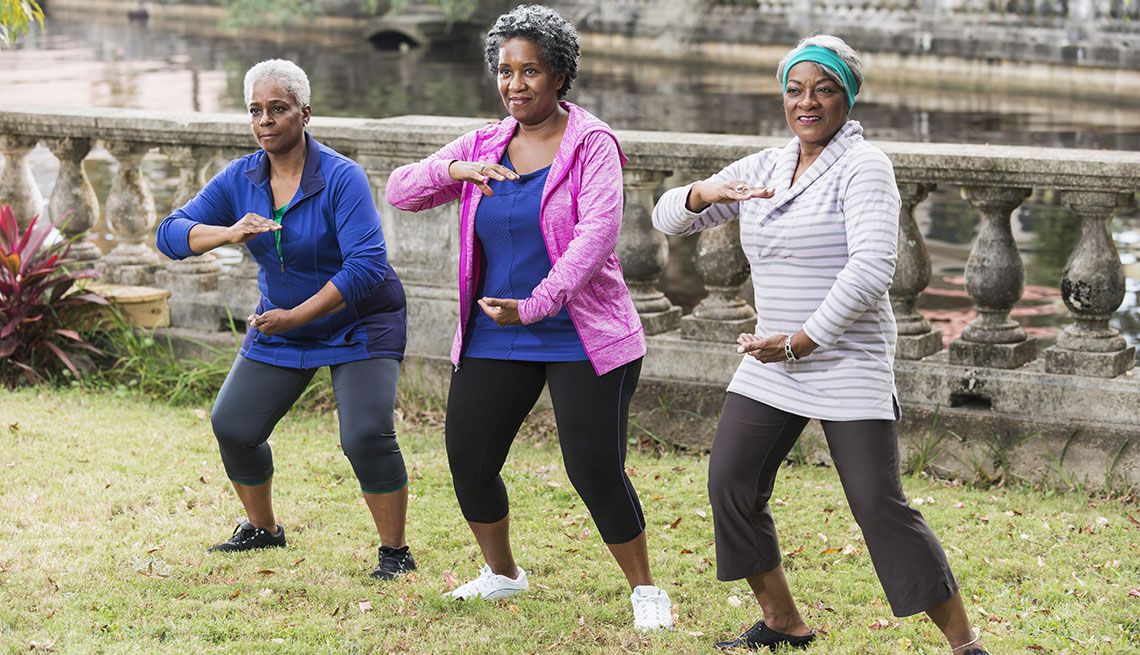
5 exercises that can keep your brain sharp
- Select a language for the TTS:
- UK English Female
- UK English Male
- US English Female
- US English Male
- Australian Female
- Australian Male
- Language selected: (auto detect) - EN
Play all audios:

3. YOGA A 2016 UCLA study published in the _Journal of Alzheimer’s Disease_ found that people 55 or older who enrolled in a 12-week program consisting of an hour of a type of meditative
yoga once a week as well as 12 minutes of at-home meditation had significant improvements in both verbal memory (the ability to remember word lists) and visual-spatial memory (the ability
to find and remember locations). “These types of changes occur when we practice unfamiliar movements, because when we learn new skills, we actually create new neural pathways,” says Cathy
Ciolek, president of the board of APTA Geriatrics and a physical therapist in Wilmington, Delaware. 4. TAI CHI Older adults who practiced tai chi for 12 weeks had a greater ability to
multitask than those who didn’t practice it, according to a 2018 study published in the journal _Frontiers in Aging Neuroscience_. They also had more activity in the prefrontal cortex, the
part of the brain where higher-level thinking occurs. Research supported by the National Center for Complementary and Integrative Health also suggests that tai chi can help improve
reasoning, planning, problem-solving and memory among older adults who show no evidence of significant cognitive impairment. Adults with mild cognitive impairment due to dementia saw a boost
in cognitive ability too. Ciolek points out that tai chi is a great form of exercise because it combines mental focus with movement. In other words, the brain has to think about what comes
next while the body stays active. “Any form of cardiovascular exercise improves cognition, because it improves oxygen supply to the brain,” Ciolek explains. “It also reduces stress, which
can help people slow down and focus better.” 5. DANCING A landmark _New England Journal of Medicine_ study followed seniors for more than 20 years and found that regular dancing reduced the
risk of dementia by 76 percent — twice as much as reading. More recently, a 2017 review published in the journal _Current Alzheimer Research_ concluded that dance interventions improved
cognitive function in dementia patients. EASING INTO PHYSICAL ACTIVITY More generally, experts recommend that people try to stay on their feet as much as possible. A 2018 study that Small
and others published in the journal _PLOS ONE _found that adults ages 45 to 75 who sat at least three hours a day had substantial thinning of their medial temporal lobe, a part of the brain
responsible for the formation of new memories. “This thinning is usually a precursor to dementia,” Small notes. Even if you tend to sit more than you move, don't jump into activity,
which can raise the risk of physical injury. Instead, Casaletto recommends that you start slowly and work your way up. “Consider adding movement into your typical everyday activities,” she
suggests. This can be intentionally parking a little farther away from the grocery store, doing wall sits while you brush your teeth, going for a walk during your next phone call, standing
while you take that meeting or even doing five sit-ups during a commercial break. “These moments add up,” Casaletto stresses. “The more naturally movement can fit into your day-to-day life,
the easier it will be to maintain.” _Hallie Levine is a contributing writer and an award-winning medical and health reporter. Her work has appeared in _The New York Times, Consumer
Reports, Real Simple, Health _and _Time_, among other publications. _ _Editor's note: This article, originally published on March 2, 2022, has been updated to reflect new
information._
